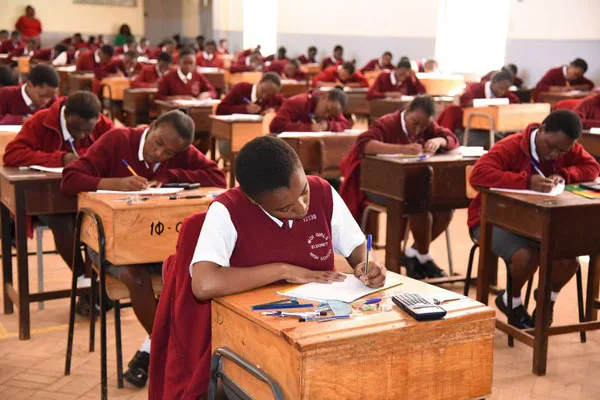Only 20% of KCSE Candidates Achieve University Entry Grades in Five Years.
Over the past five years, data reveals that only 2 out of every 10 candidates in the Kenya Certificate of Secondary Education (KCSE) exams achieved a C+ or higher, the minimum grade required for university entry. The remaining 80% scored below this benchmark, reflecting systemic failures in the education system.
From 2020 to 2024, 4,317,349 students sat for KCSE, but only 909,784 (21.07%) qualified for university. Of these, 54.01% were male, and 45.98% were female.
Another 1,020,509 (23.63%) scored between C and C-, making them eligible for colleges and Technical Vocational Education and Training (TVET). A majority (50.14%) scored D+, D, or D-, with slightly more females (50.17%) than males (49.28%) in this category.
Table 1: Performance by Grade (2020–2024)
| Grade Range | Percentage of Students | Gender Distribution (Male/Female) |
|---|---|---|
| C+ and Above | 21.07% | 54.01% / 45.98% |
| C and C- | 23.63% | 48.22% / 51.77% |
| D+, D, and D- | 50.14% | 49.28% / 50.17% |
| E | 4.66% | 57.71% / 42.28% |
Systemic Challenges in Schools
Research points to inadequate funding, poor infrastructure, and resource constraints as major obstacles affecting students’ performance.
According to Kenya Secondary Schools Heads Association (KESSHA) Chairperson Willy Kuria, underprivileged schools often suffer from delayed or incomplete government capitation, power and water disconnections, and lack of teaching materials.
These conditions lower staff morale and limit students’ ability to excel.
Spot-checks across schools revealed severe shortages, including teacher deficits, lack of libraries, outdated laboratories, and inadequate classrooms.
For instance, Elburgon DEB Secondary School in Nakuru reported losing Board of Management (BOM) teachers due to unpaid salaries.
Similarly, Michinda Boys High School lacked proper workshops for technical subjects, hindering its potential despite offering unique courses in the region.
Case Studies of Poor Performance
Nakuru County
In 2024, Elburgon DEB Secondary had 380 candidates, with only 39 scoring C+ and above. Michinda Boys High School recorded better performance, with 34 out of 99 candidates qualifying for university.
Kisii County
Amariba Secondary School posted a mean score of 2.733 in 2023, with only eight out of 60 candidates qualifying for university in 2024. Parents attributed the poor performance to ineffective leadership and dwindling student enrollment.
Uasin Gishu County
Lelmolwok Secondary had 47 out of 106 candidates score grade E in 2024, the highest number in the county. Despite challenges, the region saw a slight increase in students attaining grade A.
Insecurity and Natural Disasters
Insecurity and natural disasters exacerbate educational inequities. In West Pokot, Cheptulel Boys’ students were forced to study in a primary school due to insecurity, while Lodwar Boys in Turkana admitted lower-performing students due to the same challenges.
Flood-prone regions in Kisumu, such as Nyando, also reported low university entry rates, with infrastructure damage and poverty limiting learning opportunities.
Read Also: Public Universities Funding Crisis: Staff Strikes and Student Hardships Escalate
Recommendations for Improvement
Education stakeholders, including KESSHA and KUPPET, have called for increased funding, better resource allocation, and infrastructural improvements.
Kisumu KUPPET Secretary Zablon Awange emphasized the need for teacher stability, citing the negative effects of arbitrary transfers on school performance.
To address low university entry rates, TVET institutions are becoming critical alternatives. According to the 2024 Economic Survey, Kenya has over 1,400 public and private vocational training centres and 12 national polytechnics.
In 2023, over 642,000 students enrolled in these institutions, a number expected to grow with the 2024 KCSE results.
Conclusion
Kenya’s education system faces numerous challenges, from poor infrastructure to insecurity. While TVET institutions provide a viable path for many students, systemic reforms are needed to ensure equitable access to quality education.
Enhanced funding, targeted infrastructural development, and community involvement are crucial to improving outcomes and addressing disparities in performance.
Only 20% of KCSE Candidates Achieve University Entry Grades in Five Years.
Follow Teachers Updates on Facebook, LinkedIn, X (Twitter), WhatsApp, Telegram, and Instagram. Get in touch with our editors at [email protected].


Discussion about this post